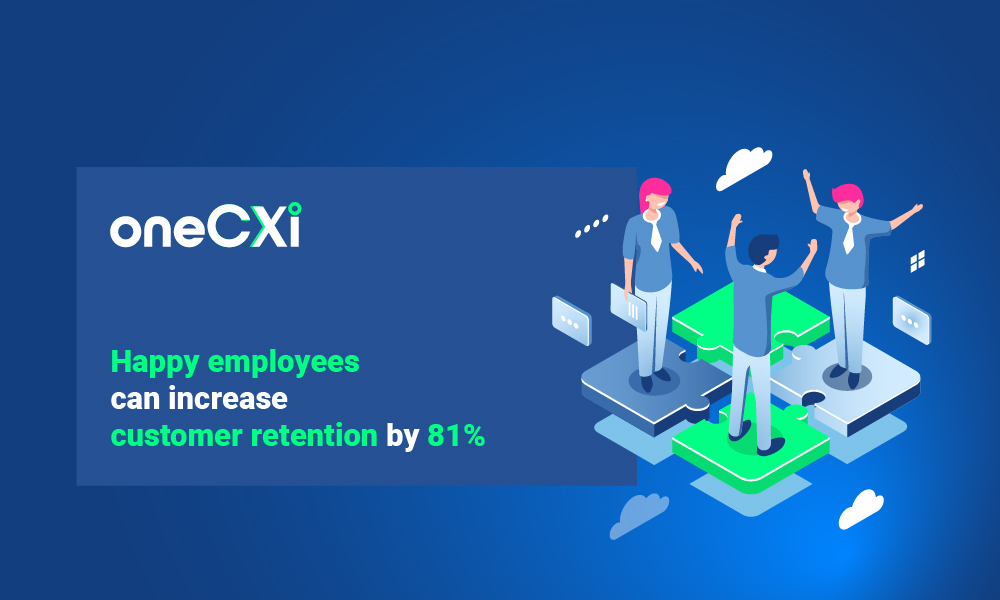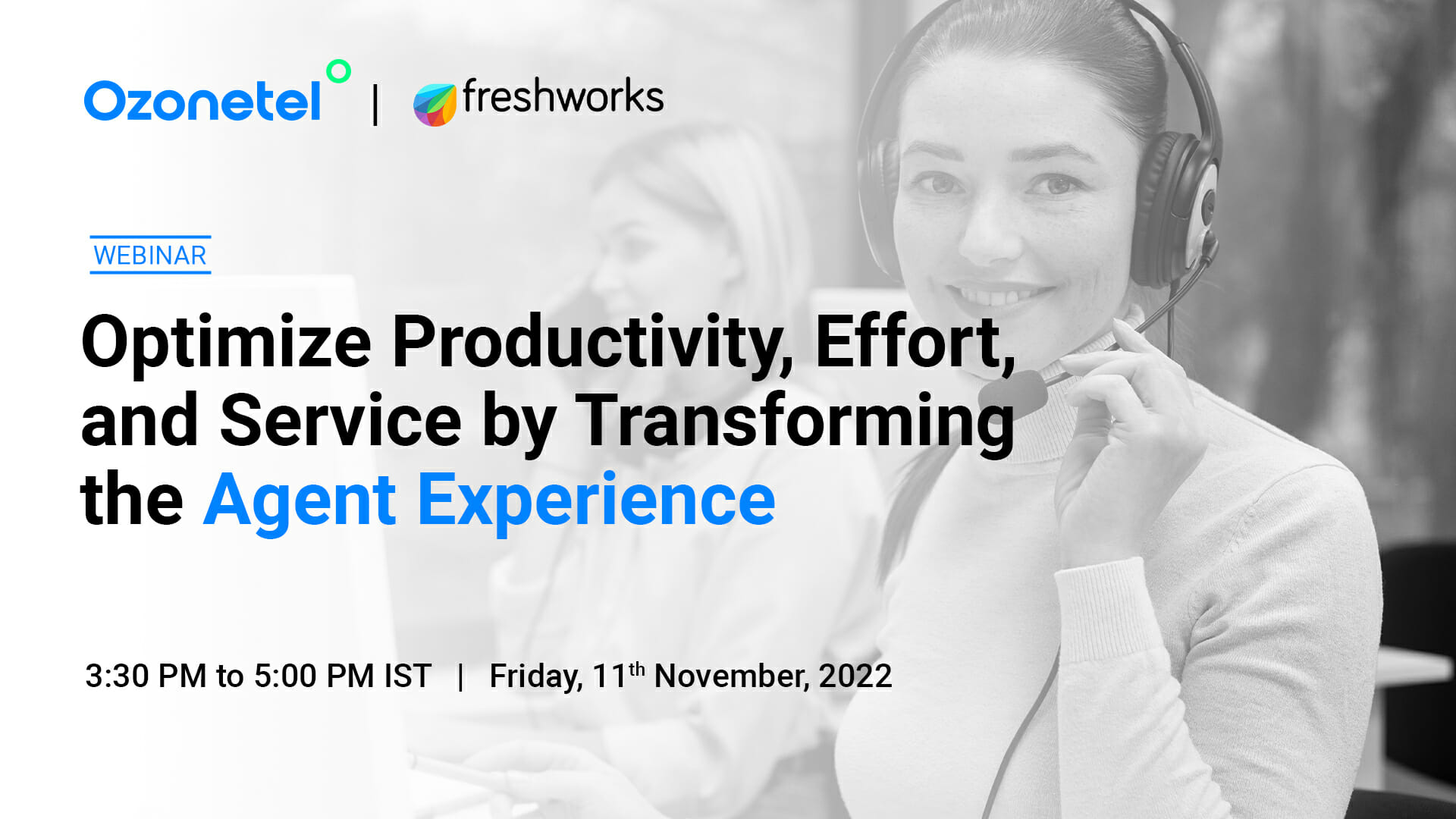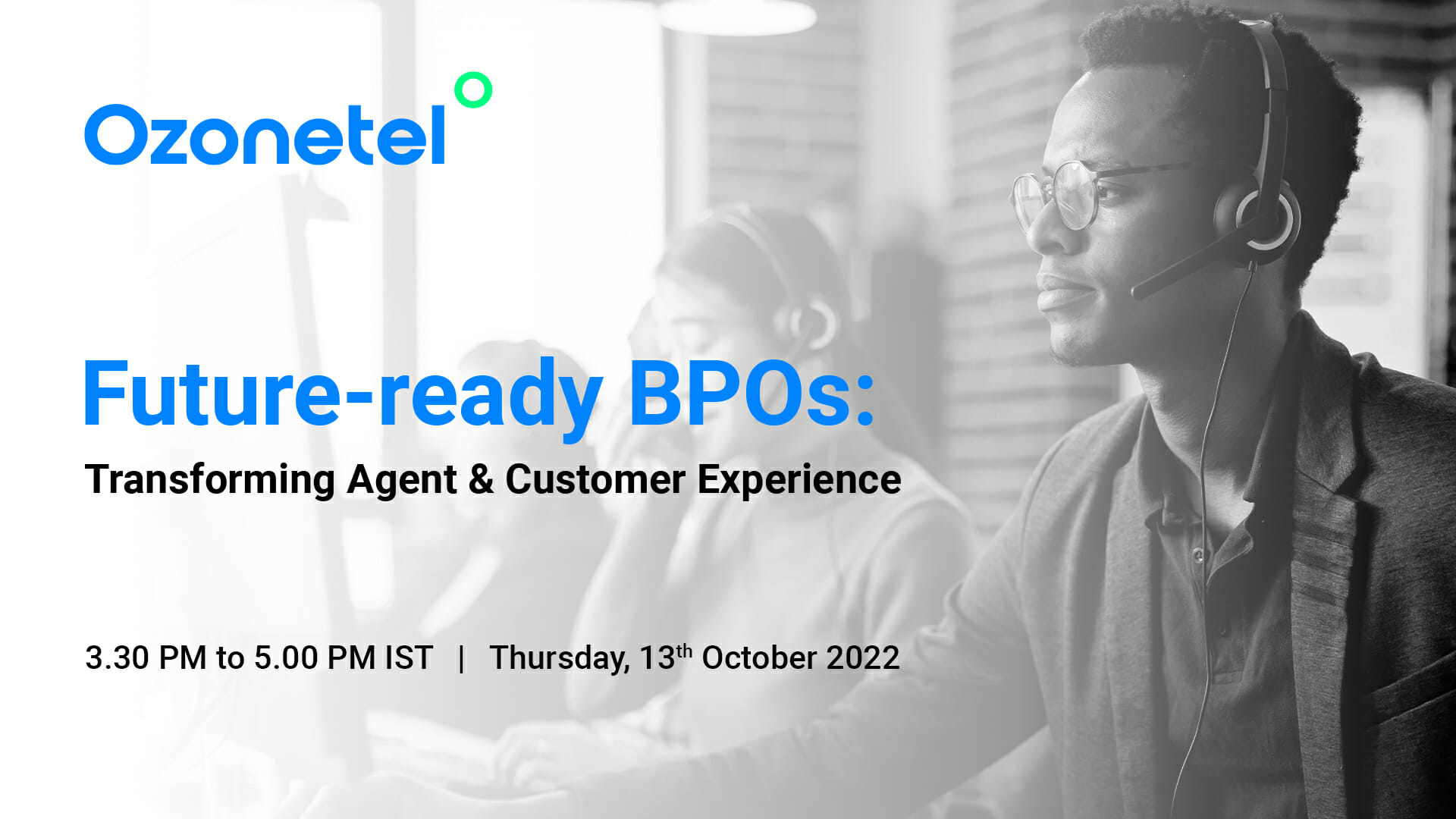- Resources
- What is EX? A Comprehensive Guide to Employee Experience
What is EX? A Comprehensive Guide to Employee Experience

Studies show that disengaged employees cost U.S. companies up to $550 billion annually in lost productivity. The only reason for this is that companies fail to prioritize employee experience. This results in companies struggling with higher turnover rates and also face difficulties in attracting and retaining top talent, which can result in major skills gaps and a lack of innovation.
Employee Experience has emerged as a critical factor in organizational success. Poor EX can result in costly employee turnover, low morale, and diminished productivity, all of which impact a company’s bottom line.
In this article, we will explore:
- 1.What is Employee Experience?
- 2. Why Employee Experience is Important
- 3. Six Stages of the Employee Lifecycle
- 4. Six Stages of the Employee Lifecycle
- 5.Key Metrics to Measure Employee Experience
- 6. Best Practices for a Successful EX Strategy
- 7. Practical Ways to Improve Employee Experience
- 8. Technology to Implement Employee Experience
- 8.Real-World Examples of Exceptional EX
- 10.How Ozonetel Helps Improve EX
What is Employee Experience?
Employee Experience (EX) is the overall perception employees have of their journey within an organization. It encompasses every interaction and touchpoint, from recruitment and onboarding to daily responsibilities, support systems, and eventual offboarding.
Unlike traditional HR, which often focuses on policies, benefits, and compliance, EX takes a broader view. It integrates culture, physical and virtual work environments, available technology, and the interpersonal dynamics that shape an employee’s day-to-day experience.
“The employee experience is defined as the cumulative assessment of an employee’s interaction with your company and its people. A positive employee experience is one where employees are trusted to do their jobs and have leaders who show them respect and are fair,” says Julian Lute, senior strategic advisor at Great Place To Work.
Effective EX programs aim to foster an environment where employees feel valued, supported, and motivated to contribute their best work.
Why Employee Experience is Important
Here’s why EX is crucial for companies striving for long-term success:
1.Employee retention
A positive employee experience significantly impacts retention rates. When employees feel valued and engaged, they are less likely to leave, which saves companies substantial costs related to hiring, training, and lost productivity.
2.Productivity
When employees feel supported and motivated, they tend to invest more effort in their roles. This leads to higher-quality work and a greater commitment to company goals, which eventually drives more productivity and efficiency. A well-designed EX encourages employees to reach their full potential, translating into direct benefits for the company’s bottom line.
3.Attract top talent
“Positive employee experiences lead to engaged employees, and engaged employees are five times more likely to recommend the organization than those who are not engaged. While an employee-centric mindset is important to designing a good employee experience, the sweet spot is where employee needs and organizational strategy meet. That’s where HR should focus its efforts,” said Janet Clarey, Director at McLean & Company.
4. Reduces Turnover Costs
Studies reveal that the cost of employee turnover can reach up to 200% of an employee’s annual salary, factoring in hiring expenses, onboarding, and lost productivity. However, organizations can improve retention rates by investing in initiatives that enhance employee satisfaction, engagement, and wellness.
For example, anonymous surveys and consistent feedback mechanisms help address concerns early, while growth opportunities like internal promotions keep employees motivated to stay.
5.Organizational growth
A strong employee experience contributes to organizational growth by attracting top talent, enhancing the company’s reputation, and ultimately increasing profitability. Companies with a positive EX have a lower rate of attrition and are viewed as more attractive by potential hires. In turn, these companies are better positioned to innovate, grow, and maintain a competitive edge in the market.
6.Better customer experience
The impact of EX reaches beyond internal teams, influencing customer experience (CX) as well. Satisfied, engaged employees are more likely to deliver excellent customer service, creating a ripple effect that benefits the customer. When employees are content, they tend to exhibit higher levels of empathy, patience, and attentiveness in their customer interactions, fostering stronger customer loyalty and satisfaction.
Six Stages of the Employee Lifecycle
The employee lifecycle represents the journey employees experience within an organization, from the initial attraction to their eventual departure. Each stage presents unique opportunities to enhance EX through purposeful processes, clear communication, and continuous support.
1.Attraction
This stage involves how potential employees perceive the company and its brand before they even consider applying. An organization’s reputation, culture, and values play a significant role in attracting talent.
How to enhance EX:
- Employer branding: Showcase a positive and authentic employer brand through social media, employee testimonials, and case studies
- Transparency: Provide clear information about company values, benefits, growth opportunities, and work-life balance
- Employee referrals: Encourage existing employees to refer potential candidates, as they can provide an honest view of the company culture
2.Recruitment
The recruitment stage is where potential employees interact directly with the company through the hiring process. A smooth, respectful recruitment experience can significantly influence a candidate’s perception.
How to enhance EX:
- Transparent Process: Keep candidates informed about timelines, next steps, and expectations throughout the hiring process
- Positive Candidate Experience: Streamline interviews and assessments to reduce unnecessary delays and make candidates feel respected
- Consistent Communication: Update candidates regularly to show respect for their time and interest, creating a foundation of trust and positive rapport
3.Onboarding
Once candidates are hired, onboarding is crucial for helping new employees adapt to their roles, understand company culture, and start contributing effectively. This stage is the foundation of the employer-employee relationship.
How to enhance EX:
- First day: Make sure the candidate has all the necessary work equipment, a welcome gift, and brand goodies (if any)
- Structured onboarding program: Design a step-by-step plan that includes role training, introduction to team members, and exposure to company values and culture
- Personalized support: Assign mentors or buddies to provide guidance and answer questions, making new hires feel welcome and supported
4.Development
As employees settle into their roles, the development stage focuses on supporting their growth, skill-building, and career progression within the organization. This helps retain employees, so retention and development are interlinked stages of the employee lifecycle.
How to enhance EX:
- Ongoing Learning & Development: Offer training, certifications, and skill-building opportunities to support career growth
- Career Pathing: Provide clear career trajectories and regularly review goals to encourage advancement within the company
- Skill Diversification: Assign challenging projects that help employees expand their skills and feel valued
5.Retention
At this stage, the goal is to maintain a positive and engaging experience that encourages employees to stay long-term. Employee satisfaction and engagement are critical here, and this is the largest part of the employee lifecycle.
How to enhance EX:
- Employee Recognition Programs: Celebrate achievements, both big and small, to make employees feel valued and appreciated.
- Work-Life Balance Support: Offer flexible work options, mental health resources, and wellness programs to reduce burnout.
- Inclusive Culture: Foster a sense of belonging by promoting inclusivity, encouraging diverse perspectives, and providing equal growth opportunities.
6.Separation
The separation phase, or offboarding, occurs when employees decide to leave the company. A thoughtful and respectful offboarding process can leave employees feeling positive about their time with the organization and increase the likelihood of positive referrals or future rehires.
How to enhance EX:
- Exit interviews: Conduct respectful exit interviews to understand reasons for leaving and identify improvement areas for future EX strategies
- Smooth transition: Help departing employees wrap up their responsibilities and facilitate a smooth handover to prevent disruptions
- Stay connected: Maintain connections through alumni networks or periodic updates, allowing for potential rehiring or future collaborations
Key Metrics to Measure Employee Experience
Some important metrics that will help you understand your organization’s EX level and if you need to improve it are:
- Employee Recruitment: Evaluate metrics like time-to-hire, onboarding satisfaction, and referral rates. High referral rates indicate satisfied employees who endorse the organization to their network.
- Employee Satisfaction: Gather feedback through anonymous surveys to assess employee satisfaction across key areas like organization, team dynamics, manager support, and role clarity.
- Employee Wellness: Monitor workplace stress and health indicators through aggregate health screenings if available.
- Employee Net Promoter Score (eNPS): Use this score to measure employees’ likelihood to recommend the company as a place to work, reflecting overall satisfaction
- Employee Retention Rate: Underscores percentage of employees who stay with the organization for at least a year High retention reflects stronger engagement and a positive workplace culture.
- Employee Engagement Score: Track engagement levels through regular surveys, assessing aspects like enthusiasm, motivation, and connection to company goals. You can also use employee engagement tools like Advantage Club to track engagement levels.
- Turnover Rate by Tenure: Measure turnover by the length of time employees stay with the company, providing insights into retention across different employee segments
- Employee Absenteeism: Calculate absenteeism rates by dividing unplanned absences by total planned workdays. High absenteeism may highlight underlying issues like burnout or dissatisfaction.
- Vacation Days Used: Track this as a sign of work-life balance and a well-managed workplace. Employees using their vacation days typically return more refreshed and productive.
- Internal Mobility Rate: Measure the number of employees who take on new roles or promotions within the company, reflecting career growth and satisfaction.
- Employee-Rating Websites: Analyze feedback on platforms like Glassdoor to uncover candid insights into workplace sentiment. Key metrics include overall ratings, CEO approval, and referral percentages.
Best Practices for a Successful EX Strategy
Building a sustainable Employee Experience (EX) strategy is essential for companies looking to build a productive and fulfilling work environment. Following are the best practices required in an EX strategy that supports both employee satisfaction and organizational success.
Adopting these best practices empowers companies to cultivate a positive work culture, enhancing employee engagement and driving business growth.
Practical Ways to Improve Employee Experience
Here are some effective ways to enhance EX in today’s business environment:
1.Flexible work policies
With the rise of hybrid and remote work, offering flexibility is essential for improving work-life balance. Flexible work arrangements increase job satisfaction and reduce stress and absenteeism.
Implement policies that allow employees to choose between in-office, hybrid, or fully remote work. Flexible hours and “no-meeting” days can help employees manage their workload more effectively.
2.Comprehensive wellness programs
Supporting employees’ physical, mental, and financial wellness is crucial to their overall experience. Wellness programs have proven benefits for both employees and organizations, including reduced healthcare costs, higher engagement, and improved morale.
The wellness programs should cover fitness reimbursements, access to mental health counseling, and financial planning resources. Regular wellness check-ins and personalized wellness plans can further enhance participation.
3.Career development opportunities
Investing in career development is a powerful way to show employees that you value their growth. Opportunities for upskilling, training, and clear career paths can increase motivation, loyalty, and productivity.
Provide access to mentorship programs, role-specific training, and certification courses that align with employees’ career aspirations. Offering clear progression paths and regular career development check-ins can reinforce the commitment to growth.
4.Supportive work environment
Fostering a supportive, inclusive workplace culture helps employees feel respected, connected, and valued. Inclusivity initiatives, employee resource groups, and mentorship programs enable diverse voices to be heard and celebrated.
Have employee resource groups (ERGs) that provide a safe space for different employee communities, from cultural and gender diversity to mental health support.
Technology to Implement Employee Experience
Apart from these tips, implementing the right technologies can significantly improve how employees interact with their workplace, which can promote a positive and productive environment. Here are some technology that you can implement:
Human Resource Management System (HRMS)
An HRMS can streamline various administrative tasks by integrating with:
- Time and attendance systems.
- Payroll management software.
- Single sign-on (SSO) for easier access.
This minimizes micromanagement, supports self-service capabilities, and enhances the workplace experience.
Self-Service Portal
Offer an employee self-service portal where team members can:
- Access and update their personal information.
- Review benefits and request time off.
- Find important company policies without needing HR’s assistance.
Virtual Platforms
Strengthen teamwork with collaboration tools like Microsoft Teams, Slack, or Trello. These platforms make it easy for employees to communicate, manage projects, and stay connected—whether working remotely or across departments.
Chatbots
Chatbots use natural language processing (NLP, a type of AI that helps computers understand and respond to human language) to provide quick and accurate assistance.
And AI-enabled HR chatbots can simplify common HR tasks, such as:
- Answering frequently asked questions.
- Offering real-time support for employee queries.
Mobile App
A mobile app keeps employees connected and informed, offering easy access to company updates, news, and resources. This is particularly useful for remote or on-the-go employees, ensuring they stay engaged and up to date with what’s happening within the company.
Performance Management System
A performance management system helps track goals, provide feedback, and recognize achievements. Combining this with people analytics—tools that analyze employee data—can give you insights into performance trends and areas where improvements can be made. This not only boosts productivity but also ensures that employees feel valued and motivated.
Learning Management System (LMS)
Talent development is key to improving employee experience. A learning management system (LMS) offers employees easy access to training and development resources, helping them stay compliant and grow in their roles.
AI-powered features can even identify skill gaps and recommend personalized learning paths, ensuring that your employees have the resources they need to succeed.
Real-World Examples of Exceptional EX
Now, let’s look at some real-world examples that show how organizations are fostering environments where employees can thrive, with a focus on personal growth, open communication, and adaptability.
Cisco
Cisco fosters exceptional employee experiences (EX) by prioritizing self-directed learning, career development, and performance management. The company invests in employee growth through training, with an average of 8.6 hours spent on learning per full-time employee in fiscal 2023.
Moreover, Cisco empowers employees to explore different roles and develop new skills, while also ensuring teams are aligned and supported through regular feedback and agile performance management.
Microsoft
The company uses Microsoft Viva Insights to provide personalized recommendations that help employees improve their work habits, manage stress, and achieve better work-life balance. This platform also supports managers by offering data-driven insights to improve team dynamics and leadership practices.
As “Customer Zero” for its own products, Microsoft collaborates closely with the Viva Insights team, using internal feedback to refine features and ensure the tool meets employee needs. With a focus on privacy, inclusion, and adaptability, Microsoft is creating a thriving, engaged workforce through data-backed solutions and continuous improvement.
Salesforce
With 94% of employees willing to go the extra mile and 92% feeling productive in a flexible environment, Salesforce’s approach is clearly effective. The company also established an EX team dedicated to enhancing employee engagement by using data to address challenges and support employees in balancing work and personal life. This focus on connection, flexibility, and data-driven improvements has helped Salesforce create a thriving, inclusive workforce.
Alphabet Inc., the parent company of Google, is a prime example of exceptional employee experience (EX). Known for its innovative workplace policies, the company prioritizes employee well-being by offering flexible schedules, mental health support, and generous parental leave for its US-based employees. These benefits help foster a strong work-life balance, supporting both personal and professional growth.
NVIDIA
NVIDIA supports professional growth with robust training programs, workshops, and mentoring opportunities, ensuring employees have clear paths for career advancement. The company also promotes a culture of innovation through initiatives like the NVIDIA Inception Program and maintains an inclusive environment with Employee Resource Groups (ERGs).
Additionally, NVIDIA prioritizes employee well-being with comprehensive health benefits, mental health support, and flexible work arrangements, creating a supportive and balanced workplace for its employees.
How Ozonetel Helps Improve EX
With Ozonetel, you can empower your employees to manage high call volumes, address customer needs effectively, and maintain productivity, whether they work on-site or remotely. Here’s how Ozonetel helps enhance employee experience across industries:
Monitoring Call Quality Boosting Agent Productivity & Prioritizing High-Intent Leads
Ozonetel’s advanced tools for call quality monitoring and intelligent lead prioritization ensure that your agents stay productive while maintaining high customer satisfaction. For example, a stockbroking company partnered with Ozonetel to help with the fluctuating call volumes. The result?
- 40,000+ calls handled daily with up to 1,340 calls managed concurrently
- 80% First Contact Resolution (FCR)
- 25% reduction in average handle time (AHT)
- Advanced Tools to Facilitate Remote Working Stockbroking
Apart from managing call volumes, Ozonetel provides you with tools like real-time dashboards and remote agent features that allow supervisors to maintain productivity effortlessly.
For example, a leading stockbroking firm transitioned to a fully virtual contact center ensuring uninterrupted service with Ozonetel’s platform. The result?
- 650+ agents managed remotely, handling over 1 lakh minutes of calls daily.
- 60% increase in CSAT (Customer Satisfaction Score)
- 40% reduction in agent attrition
Improve the Performance of 900+ Healthcare Advisors
For large-scale initiatives like PM-JAY, managing the performance of healthcare advisors while ensuring beneficiary satisfaction requires advanced analytics and monitoring. Ozonetel’s AI-based tools simplify supervision and enhance advisor performance. The results?
- 900 advisors monitored daily using AI-driven speech analytics.
- 122,000+ hours of conversations analyzed across 11 vernacular languages.
- 30 hours saved per supervisor per month through automated quality audits.
Conclusion
When EX is strong, employees are engaged, motivated, and less likely to leave, which means less turnover, more productivity, and a culture people want to be part of. Leaders who invest in EX aren’t just keeping up with trends; they’re actively setting their companies up for a competitive edge in attracting and keeping top talent.
Take a close look at your current EX. Where are the gaps? What could be done better? Small improvements today can create a lasting impact tomorrow. A positive employee experience doesn’t just improve work for your team—it drives real results that lift the whole organization. So, let’s get moving on building an EX that truly shines.
Start your EX journey today by conducting employee surveys, implementing flexible work arrangements, and investing in employee development.
Prashanth Kancherla
Chief Operating Officer, Ozonetel Communications
Over the past decade, Prashanth has worked with 3000+ customer experience and contact center leaders...
Chief Operating Officer, Ozonetel Communications
Over the past decade, Prashanth has worked with 3000+ customer experience and contact center leaders to comprehensively understand the need for effective and efficient customer communications at every step of their journey with a brand. Deeply embedded in today’s CCaaS ecosystem, he has been instrumental in Ozonetel's growth and contributed in various roles including product management, sales, and solution architecture.
Frequently Asked Questions
The 4 C’s of omnichannel focus on ensuring a seamless and integrated customer experience across all touchpoints. They are:
- Customer: Understanding customer preferences and behaviors to personalize their experience.
- Convenience: Ensuring that customers can easily access services and information, regardless of the channel.
- Consistency: Providing a uniform experience across all channels, so customers receive the same quality of service no matter where they engage.
- Communication: Ensuring effective and clear communication between the business and the customer across all channels.
Netflix’s omnichannel strategy revolves around providing a seamless entertainment experience across multiple platforms, including TV, mobile devices, laptops, and more. The company also ensures consistency in content availability, recommendations, and user preferences, regardless of the device used.
To measure omnichannel customer experience, businesses should track:
- Customer Satisfaction (CSAT): Collect feedback from customers on their experience across different touchpoints.
- Net Promoter Score (NPS): Measure customer loyalty by asking how likely customers are to recommend the brand after interacting with different channels.
- Customer Effort Score (CES): Assess how easy it is for customers to resolve issues or complete tasks across various channels.
- Channel Performance: Monitor the effectiveness of individual channels (e.g., mobile, in-store, online) and their contribution to overall satisfaction.
- Retention Rates: Analyze how well omnichannel strategies influence customer retention and lifetime value.
Related resources
Lorem ipsum dolor sit amet, consectetur adipiscing elit. Ut elit tellus, luctus nec ullamcorper mattis, pulvinar dapibus leo.
Lorem ipsum dolor sit amet, consectetur adipiscing elit. Ut elit tellus, luctus nec ullamcorper mattis, pulvinar dapibus leo.
Filter by Tags
- Resources
- What is EX? A Comprehensive Guide to Employee Experience
What is EX? A Comprehensive Guide to Employee Experience

Studies show that disengaged employees cost U.S. companies up to $550 billion annually in lost productivity. The only reason for this is that companies fail to prioritize employee experience. This results in companies struggling with higher turnover rates and also face difficulties in attracting and retaining top talent, which can result in major skills gaps and a lack of innovation.
Employee Experience has emerged as a critical factor in organizational success. Poor EX can result in costly employee turnover, low morale, and diminished productivity, all of which impact a company’s bottom line.
In this article, we will explore:
- 1.What is Employee Experience?
- 2. Why Employee Experience is Important
- 3. Six Stages of the Employee Lifecycle
- 4. Six Stages of the Employee Lifecycle
- 5.Key Metrics to Measure Employee Experience
- 6. Best Practices for a Successful EX Strategy
- 7. Practical Ways to Improve Employee Experience
- 8. Technology to Implement Employee Experience
- 8.Real-World Examples of Exceptional EX
- 10.How Ozonetel Helps Improve EX
What is Employee Experience?
Employee Experience (EX) is the overall perception employees have of their journey within an organization. It encompasses every interaction and touchpoint, from recruitment and onboarding to daily responsibilities, support systems, and eventual offboarding.
Unlike traditional HR, which often focuses on policies, benefits, and compliance, EX takes a broader view. It integrates culture, physical and virtual work environments, available technology, and the interpersonal dynamics that shape an employee’s day-to-day experience.
“The employee experience is defined as the cumulative assessment of an employee’s interaction with your company and its people. A positive employee experience is one where employees are trusted to do their jobs and have leaders who show them respect and are fair,” says Julian Lute, senior strategic advisor at Great Place To Work.
Effective EX programs aim to foster an environment where employees feel valued, supported, and motivated to contribute their best work.
Why Employee Experience is Important
Here’s why EX is crucial for companies striving for long-term success:
1.Employee retention
A positive employee experience significantly impacts retention rates. When employees feel valued and engaged, they are less likely to leave, which saves companies substantial costs related to hiring, training, and lost productivity.
2.Productivity
When employees feel supported and motivated, they tend to invest more effort in their roles. This leads to higher-quality work and a greater commitment to company goals, which eventually drives more productivity and efficiency. A well-designed EX encourages employees to reach their full potential, translating into direct benefits for the company’s bottom line.
3.Attract top talent
“Positive employee experiences lead to engaged employees, and engaged employees are five times more likely to recommend the organization than those who are not engaged. While an employee-centric mindset is important to designing a good employee experience, the sweet spot is where employee needs and organizational strategy meet. That’s where HR should focus its efforts,” said Janet Clarey, Director at McLean & Company.
4. Reduces Turnover Costs
Studies reveal that the cost of employee turnover can reach up to 200% of an employee’s annual salary, factoring in hiring expenses, onboarding, and lost productivity. However, organizations can improve retention rates by investing in initiatives that enhance employee satisfaction, engagement, and wellness.
For example, anonymous surveys and consistent feedback mechanisms help address concerns early, while growth opportunities like internal promotions keep employees motivated to stay.
5.Organizational growth
A strong employee experience contributes to organizational growth by attracting top talent, enhancing the company’s reputation, and ultimately increasing profitability. Companies with a positive EX have a lower rate of attrition and are viewed as more attractive by potential hires. In turn, these companies are better positioned to innovate, grow, and maintain a competitive edge in the market.
6.Better customer experience
The impact of EX reaches beyond internal teams, influencing customer experience (CX) as well. Satisfied, engaged employees are more likely to deliver excellent customer service, creating a ripple effect that benefits the customer. When employees are content, they tend to exhibit higher levels of empathy, patience, and attentiveness in their customer interactions, fostering stronger customer loyalty and satisfaction.
Six Stages of the Employee Lifecycle
The employee lifecycle represents the journey employees experience within an organization, from the initial attraction to their eventual departure. Each stage presents unique opportunities to enhance EX through purposeful processes, clear communication, and continuous support.
1.Attraction
This stage involves how potential employees perceive the company and its brand before they even consider applying. An organization’s reputation, culture, and values play a significant role in attracting talent.
How to enhance EX:
- Employer branding: Showcase a positive and authentic employer brand through social media, employee testimonials, and case studies
- Transparency: Provide clear information about company values, benefits, growth opportunities, and work-life balance
- Employee referrals: Encourage existing employees to refer potential candidates, as they can provide an honest view of the company culture
2.Recruitment
The recruitment stage is where potential employees interact directly with the company through the hiring process. A smooth, respectful recruitment experience can significantly influence a candidate’s perception.
How to enhance EX:
- Transparent Process: Keep candidates informed about timelines, next steps, and expectations throughout the hiring process
- Positive Candidate Experience: Streamline interviews and assessments to reduce unnecessary delays and make candidates feel respected
- Consistent Communication: Update candidates regularly to show respect for their time and interest, creating a foundation of trust and positive rapport
3.Onboarding
Once candidates are hired, onboarding is crucial for helping new employees adapt to their roles, understand company culture, and start contributing effectively. This stage is the foundation of the employer-employee relationship.
How to enhance EX:
- First day: Make sure the candidate has all the necessary work equipment, a welcome gift, and brand goodies (if any)
- Structured onboarding program: Design a step-by-step plan that includes role training, introduction to team members, and exposure to company values and culture
- Personalized support: Assign mentors or buddies to provide guidance and answer questions, making new hires feel welcome and supported
4.Development
As employees settle into their roles, the development stage focuses on supporting their growth, skill-building, and career progression within the organization. This helps retain employees, so retention and development are interlinked stages of the employee lifecycle.
How to enhance EX:
- Ongoing Learning & Development: Offer training, certifications, and skill-building opportunities to support career growth
- Career Pathing: Provide clear career trajectories and regularly review goals to encourage advancement within the company
- Skill Diversification: Assign challenging projects that help employees expand their skills and feel valued
5.Retention
At this stage, the goal is to maintain a positive and engaging experience that encourages employees to stay long-term. Employee satisfaction and engagement are critical here, and this is the largest part of the employee lifecycle.
How to enhance EX:
- Employee Recognition Programs: Celebrate achievements, both big and small, to make employees feel valued and appreciated.
- Work-Life Balance Support: Offer flexible work options, mental health resources, and wellness programs to reduce burnout.
- Inclusive Culture: Foster a sense of belonging by promoting inclusivity, encouraging diverse perspectives, and providing equal growth opportunities.
6.Separation
The separation phase, or offboarding, occurs when employees decide to leave the company. A thoughtful and respectful offboarding process can leave employees feeling positive about their time with the organization and increase the likelihood of positive referrals or future rehires.
How to enhance EX:
- Exit interviews: Conduct respectful exit interviews to understand reasons for leaving and identify improvement areas for future EX strategies
- Smooth transition: Help departing employees wrap up their responsibilities and facilitate a smooth handover to prevent disruptions
- Stay connected: Maintain connections through alumni networks or periodic updates, allowing for potential rehiring or future collaborations
Key Metrics to Measure Employee Experience
Some important metrics that will help you understand your organization’s EX level and if you need to improve it are:
- Employee Recruitment: Evaluate metrics like time-to-hire, onboarding satisfaction, and referral rates. High referral rates indicate satisfied employees who endorse the organization to their network.
- Employee Satisfaction: Gather feedback through anonymous surveys to assess employee satisfaction across key areas like organization, team dynamics, manager support, and role clarity.
- Employee Wellness: Monitor workplace stress and health indicators through aggregate health screenings if available.
- Employee Net Promoter Score (eNPS): Use this score to measure employees’ likelihood to recommend the company as a place to work, reflecting overall satisfaction
- Employee Retention Rate: Underscores percentage of employees who stay with the organization for at least a year High retention reflects stronger engagement and a positive workplace culture.
- Employee Engagement Score: Track engagement levels through regular surveys, assessing aspects like enthusiasm, motivation, and connection to company goals. You can also use employee engagement tools like Advantage Club to track engagement levels.
- Turnover Rate by Tenure: Measure turnover by the length of time employees stay with the company, providing insights into retention across different employee segments
- Employee Absenteeism: Calculate absenteeism rates by dividing unplanned absences by total planned workdays. High absenteeism may highlight underlying issues like burnout or dissatisfaction.
- Vacation Days Used: Track this as a sign of work-life balance and a well-managed workplace. Employees using their vacation days typically return more refreshed and productive.
- Internal Mobility Rate: Measure the number of employees who take on new roles or promotions within the company, reflecting career growth and satisfaction.
- Employee-Rating Websites: Analyze feedback on platforms like Glassdoor to uncover candid insights into workplace sentiment. Key metrics include overall ratings, CEO approval, and referral percentages.
Best Practices for a Successful EX Strategy
Building a sustainable Employee Experience (EX) strategy is essential for companies looking to build a productive and fulfilling work environment. Following are the best practices required in an EX strategy that supports both employee satisfaction and organizational success.
Adopting these best practices empowers companies to cultivate a positive work culture, enhancing employee engagement and driving business growth.
Practical Ways to Improve Employee Experience
Here are some effective ways to enhance EX in today’s business environment:
1.Flexible work policies
With the rise of hybrid and remote work, offering flexibility is essential for improving work-life balance. Flexible work arrangements increase job satisfaction and reduce stress and absenteeism.
Implement policies that allow employees to choose between in-office, hybrid, or fully remote work. Flexible hours and “no-meeting” days can help employees manage their workload more effectively.
2.Comprehensive wellness programs
Supporting employees’ physical, mental, and financial wellness is crucial to their overall experience. Wellness programs have proven benefits for both employees and organizations, including reduced healthcare costs, higher engagement, and improved morale.
The wellness programs should cover fitness reimbursements, access to mental health counseling, and financial planning resources. Regular wellness check-ins and personalized wellness plans can further enhance participation.
3.Career development opportunities
Investing in career development is a powerful way to show employees that you value their growth. Opportunities for upskilling, training, and clear career paths can increase motivation, loyalty, and productivity.
Provide access to mentorship programs, role-specific training, and certification courses that align with employees’ career aspirations. Offering clear progression paths and regular career development check-ins can reinforce the commitment to growth.
4.Supportive work environment
Fostering a supportive, inclusive workplace culture helps employees feel respected, connected, and valued. Inclusivity initiatives, employee resource groups, and mentorship programs enable diverse voices to be heard and celebrated.
Have employee resource groups (ERGs) that provide a safe space for different employee communities, from cultural and gender diversity to mental health support.
Technology to Implement Employee Experience
Apart from these tips, implementing the right technologies can significantly improve how employees interact with their workplace, which can promote a positive and productive environment. Here are some technology that you can implement:
Human Resource Management System (HRMS)
An HRMS can streamline various administrative tasks by integrating with:
- Time and attendance systems.
- Payroll management software.
- Single sign-on (SSO) for easier access.
This minimizes micromanagement, supports self-service capabilities, and enhances the workplace experience.
Self-Service Portal
Offer an employee self-service portal where team members can:
- Access and update their personal information.
- Review benefits and request time off.
- Find important company policies without needing HR’s assistance.
Virtual Platforms
Strengthen teamwork with collaboration tools like Microsoft Teams, Slack, or Trello. These platforms make it easy for employees to communicate, manage projects, and stay connected—whether working remotely or across departments.
Chatbots
Chatbots use natural language processing (NLP, a type of AI that helps computers understand and respond to human language) to provide quick and accurate assistance.
And AI-enabled HR chatbots can simplify common HR tasks, such as:
- Answering frequently asked questions.
- Offering real-time support for employee queries.
Mobile App
A mobile app keeps employees connected and informed, offering easy access to company updates, news, and resources. This is particularly useful for remote or on-the-go employees, ensuring they stay engaged and up to date with what’s happening within the company.
Performance Management System
A performance management system helps track goals, provide feedback, and recognize achievements. Combining this with people analytics—tools that analyze employee data—can give you insights into performance trends and areas where improvements can be made. This not only boosts productivity but also ensures that employees feel valued and motivated.
Learning Management System (LMS)
Talent development is key to improving employee experience. A learning management system (LMS) offers employees easy access to training and development resources, helping them stay compliant and grow in their roles.
AI-powered features can even identify skill gaps and recommend personalized learning paths, ensuring that your employees have the resources they need to succeed.
Real-World Examples of Exceptional EX
Now, let’s look at some real-world examples that show how organizations are fostering environments where employees can thrive, with a focus on personal growth, open communication, and adaptability.
Cisco
Cisco fosters exceptional employee experiences (EX) by prioritizing self-directed learning, career development, and performance management. The company invests in employee growth through training, with an average of 8.6 hours spent on learning per full-time employee in fiscal 2023.
Moreover, Cisco empowers employees to explore different roles and develop new skills, while also ensuring teams are aligned and supported through regular feedback and agile performance management.
Microsoft
The company uses Microsoft Viva Insights to provide personalized recommendations that help employees improve their work habits, manage stress, and achieve better work-life balance. This platform also supports managers by offering data-driven insights to improve team dynamics and leadership practices.
As “Customer Zero” for its own products, Microsoft collaborates closely with the Viva Insights team, using internal feedback to refine features and ensure the tool meets employee needs. With a focus on privacy, inclusion, and adaptability, Microsoft is creating a thriving, engaged workforce through data-backed solutions and continuous improvement.
Salesforce
With 94% of employees willing to go the extra mile and 92% feeling productive in a flexible environment, Salesforce’s approach is clearly effective. The company also established an EX team dedicated to enhancing employee engagement by using data to address challenges and support employees in balancing work and personal life. This focus on connection, flexibility, and data-driven improvements has helped Salesforce create a thriving, inclusive workforce.
Alphabet Inc., the parent company of Google, is a prime example of exceptional employee experience (EX). Known for its innovative workplace policies, the company prioritizes employee well-being by offering flexible schedules, mental health support, and generous parental leave for its US-based employees. These benefits help foster a strong work-life balance, supporting both personal and professional growth.
NVIDIA
NVIDIA supports professional growth with robust training programs, workshops, and mentoring opportunities, ensuring employees have clear paths for career advancement. The company also promotes a culture of innovation through initiatives like the NVIDIA Inception Program and maintains an inclusive environment with Employee Resource Groups (ERGs).
Additionally, NVIDIA prioritizes employee well-being with comprehensive health benefits, mental health support, and flexible work arrangements, creating a supportive and balanced workplace for its employees.
How Ozonetel Helps Improve EX
With Ozonetel, you can empower your employees to manage high call volumes, address customer needs effectively, and maintain productivity, whether they work on-site or remotely. Here’s how Ozonetel helps enhance employee experience across industries:
Monitoring Call Quality Boosting Agent Productivity & Prioritizing High-Intent Leads
Ozonetel’s advanced tools for call quality monitoring and intelligent lead prioritization ensure that your agents stay productive while maintaining high customer satisfaction. For example, a stockbroking company partnered with Ozonetel to help with the fluctuating call volumes. The result?
- 40,000+ calls handled daily with up to 1,340 calls managed concurrently
- 80% First Contact Resolution (FCR)
- 25% reduction in average handle time (AHT)
- Advanced Tools to Facilitate Remote Working Stockbroking
Apart from managing call volumes, Ozonetel provides you with tools like real-time dashboards and remote agent features that allow supervisors to maintain productivity effortlessly.
For example, a leading stockbroking firm transitioned to a fully virtual contact center ensuring uninterrupted service with Ozonetel’s platform. The result?
- 650+ agents managed remotely, handling over 1 lakh minutes of calls daily.
- 60% increase in CSAT (Customer Satisfaction Score)
- 40% reduction in agent attrition
Improve the Performance of 900+ Healthcare Advisors
For large-scale initiatives like PM-JAY, managing the performance of healthcare advisors while ensuring beneficiary satisfaction requires advanced analytics and monitoring. Ozonetel’s AI-based tools simplify supervision and enhance advisor performance. The results?
- 900 advisors monitored daily using AI-driven speech analytics.
- 122,000+ hours of conversations analyzed across 11 vernacular languages.
- 30 hours saved per supervisor per month through automated quality audits.
Conclusion
When EX is strong, employees are engaged, motivated, and less likely to leave, which means less turnover, more productivity, and a culture people want to be part of. Leaders who invest in EX aren’t just keeping up with trends; they’re actively setting their companies up for a competitive edge in attracting and keeping top talent.
Take a close look at your current EX. Where are the gaps? What could be done better? Small improvements today can create a lasting impact tomorrow. A positive employee experience doesn’t just improve work for your team—it drives real results that lift the whole organization. So, let’s get moving on building an EX that truly shines.
Start your EX journey today by conducting employee surveys, implementing flexible work arrangements, and investing in employee development.
Want to see what Ozonetel can do for your company? Sign up today for a free 7-day trial.
Prashanth Kancherla
Chief Operating Officer, Ozonetel Communications
Over the past decade, Prashanth has worked with 3000+ customer experience and contact center leaders...
Chief Operating Officer, Ozonetel Communications
Over the past decade, Prashanth has worked with 3000+ customer experience and contact center leaders to comprehensively understand the need for effective and efficient customer communications at every step of their journey with a brand. Deeply embedded in today’s CCaaS ecosystem, he has been instrumental in Ozonetel's growth and contributed in various roles including product management, sales, and solution architecture.
Frequently Asked Questions
The 4 C’s of omnichannel focus on ensuring a seamless and integrated customer experience across all touchpoints. They are:
- Customer: Understanding customer preferences and behaviors to personalize their experience.
- Convenience: Ensuring that customers can easily access services and information, regardless of the channel.
- Consistency: Providing a uniform experience across all channels, so customers receive the same quality of service no matter where they engage.
- Communication: Ensuring effective and clear communication between the business and the customer across all channels.
Netflix’s omnichannel strategy revolves around providing a seamless entertainment experience across multiple platforms, including TV, mobile devices, laptops, and more. The company also ensures consistency in content availability, recommendations, and user preferences, regardless of the device used.
To measure omnichannel customer experience, businesses should track:
- Customer Satisfaction (CSAT): Collect feedback from customers on their experience across different touchpoints.
- Net Promoter Score (NPS): Measure customer loyalty by asking how likely customers are to recommend the brand after interacting with different channels.
- Customer Effort Score (CES): Assess how easy it is for customers to resolve issues or complete tasks across various channels.
- Channel Performance: Monitor the effectiveness of individual channels (e.g., mobile, in-store, online) and their contribution to overall satisfaction.
- Retention Rates: Analyze how well omnichannel strategies influence customer retention and lifetime value.
Related resources
Lorem ipsum dolor sit amet, consectetur adipiscing elit. Ut elit tellus, luctus nec ullamcorper mattis, pulvinar dapibus leo.
Lorem ipsum dolor sit amet, consectetur adipiscing elit. Ut elit tellus, luctus nec ullamcorper mattis, pulvinar dapibus leo.
Ozonetel Live
Upcoming Webinar

Make it easy for your customers to reach you wherever, whenever, or to help themselves through bots pre-trained to solve retail use cases.
Learn more
Description, experiences: Curating communicative & collaborative customer journeys in Real Estate

Description, experiences: Curating communicative & collaborative customer journeys in Real Estate

Description, experiences: Curating communicative & collaborative customer journeys in Real Estate

Description, experiences: Curating communicative & collaborative customer journeys in Real Estate

Description, experiences: Curating communicative & collaborative customer journeys in Real Estate

Description, experiences: Curating communicative & collaborative customer journeys in Real Estate














